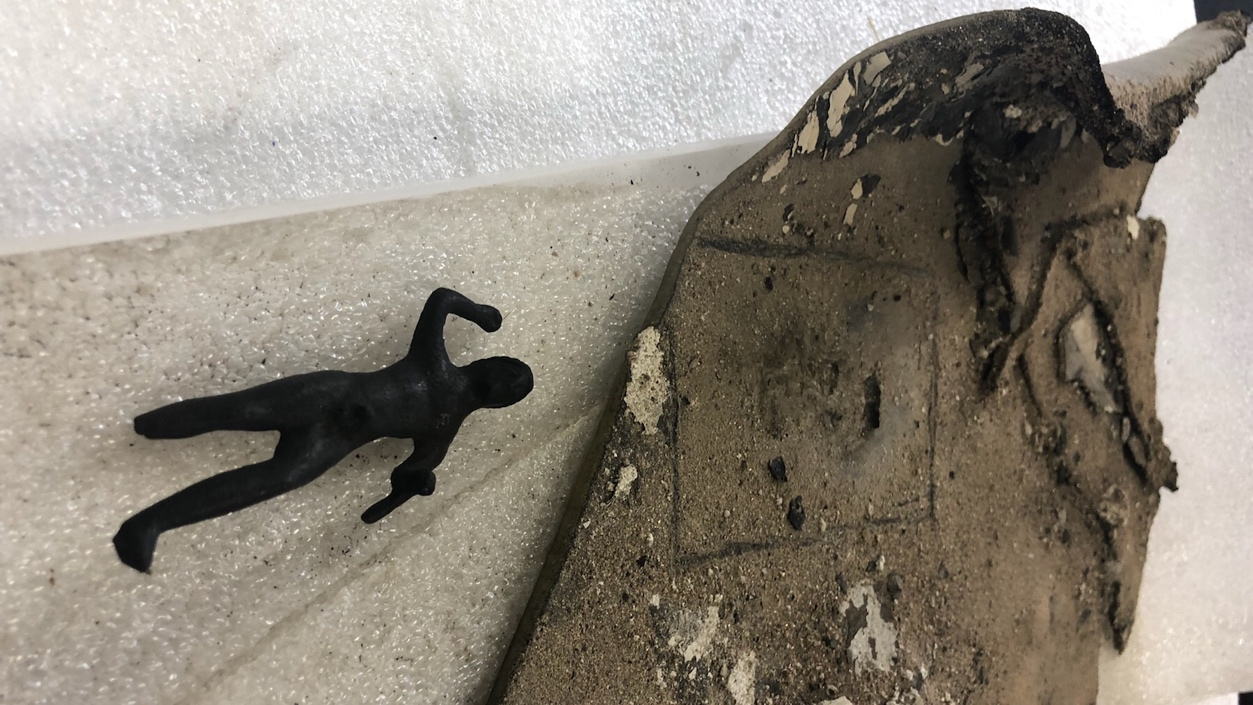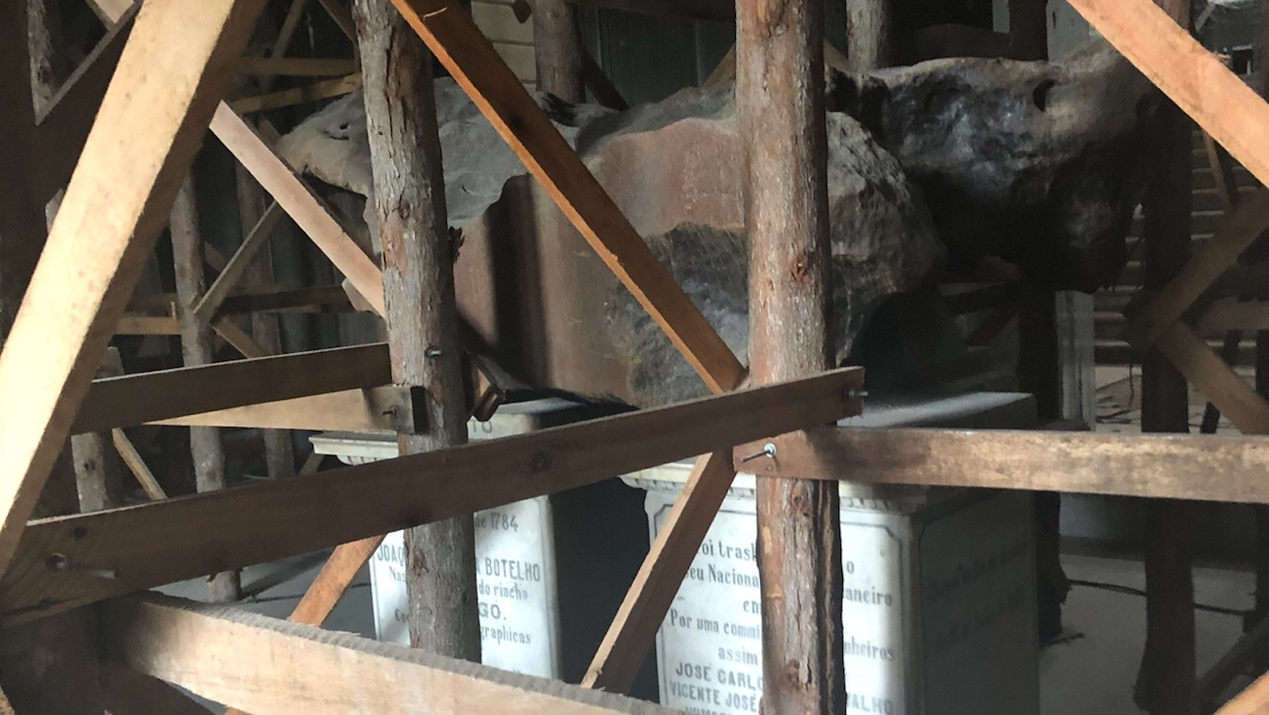02:36

It's been over a year since the National Museum of Brazil in Rio de Janeiro was consumed by a devastating fire. CGTN visited the museum to get up to see the progress in restoring the national treasures.
In one of the container-laboratories, located in the courtyard of the museum complex, CGTN witnessed local archaeologists and repair experts scrutinizing, cleaning and restoring the artifacts that were salvaged from fire last year.
A bronze statue, from Pompeii in Italy, got stuck on the molten glass. The work to separate them from each other lasted for months.

A bronze statue from Pompeii in Italy separated from melted glass on November 11, 2019. / CGTN Photo
A bronze statue from Pompeii in Italy separated from melted glass on November 11, 2019. / CGTN Photo
Last year, the world looked on in horror as the museum — the oldest and most significant and scientific museum in the country — went up in flames. Much of the 20 million objects kept inside, many of them irreplaceable, were thought to have been lost in the fire.
Cristiana Serejo, vice director of the museum, told CGTN that luckily some of the items were spared from fire.
"Initially we thought 80 percent of the collection was affected. Some of them were outside the building, they were saved. With the rescue, around 5,000 pieces are coming out of the palace, mainly meteorite, minerals and fossils too," said Serejo.
The 200-year-old museum, a former royal palace, was left a shell. Its debris is still being kept, in case more fragments can be found, and a massive meteorite remains as a symbol of hope.
Archeologist Murilo Bastos pointed CGTN at the signature item that confronts everyone coming to the museum.
"When visitors came here, the first thing they could see was the biggest meteorite called Bendegó. It weighed 5 tons. It is still there. For us it's very important to see part of the museum is still there, still alive," said Bastos.

The Bendegó meteorite is one of the few artifacts left relatively intact. / CGTN Photo
The Bendegó meteorite is one of the few artifacts left relatively intact. / CGTN Photo
Last year, museums from five BRICS countries, namely Brazil, Russia, India, China and South Africa, agreed to set up an alliance to fund exhibitions and protect relics. The museum says although they haven't received direct financial help from the alliance yet, they have made partnerships.
"For cooperation with China, the director told me, the Chinese national museum will have an exhibition here, there are working on an agreement about that. The Chinese Society on Paleontology are working with our director to receive fossil exchange with the national museum," adds Serejo.
The vice director also told CGTN that they're planning to reopen part of the museum in three years.